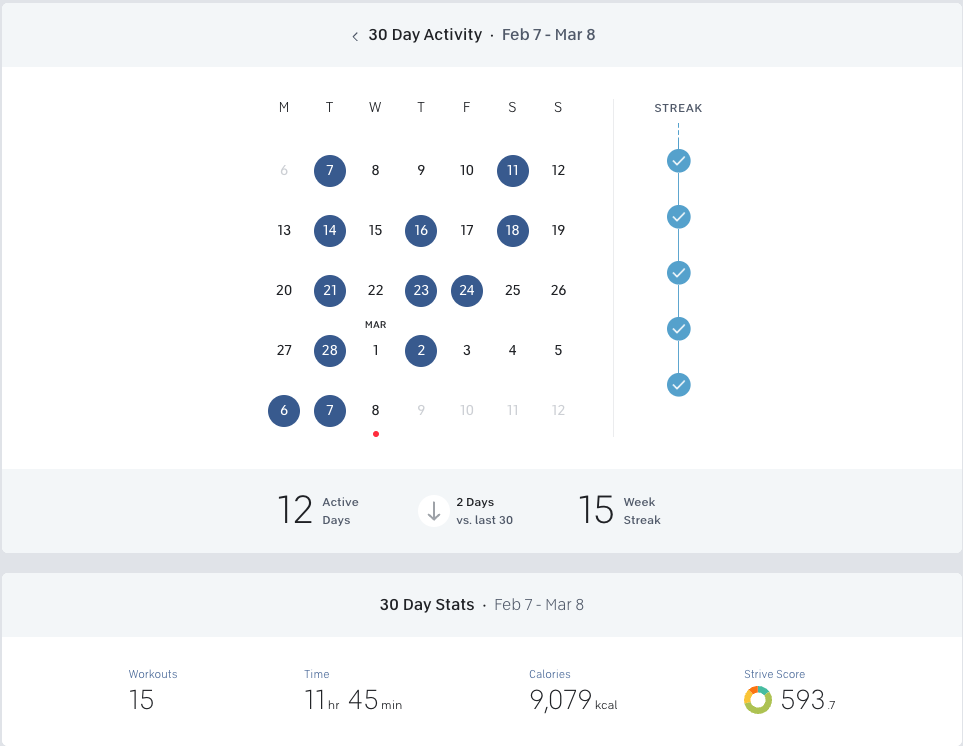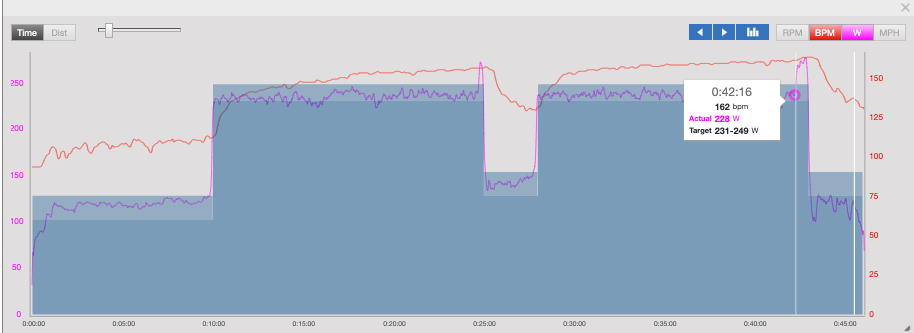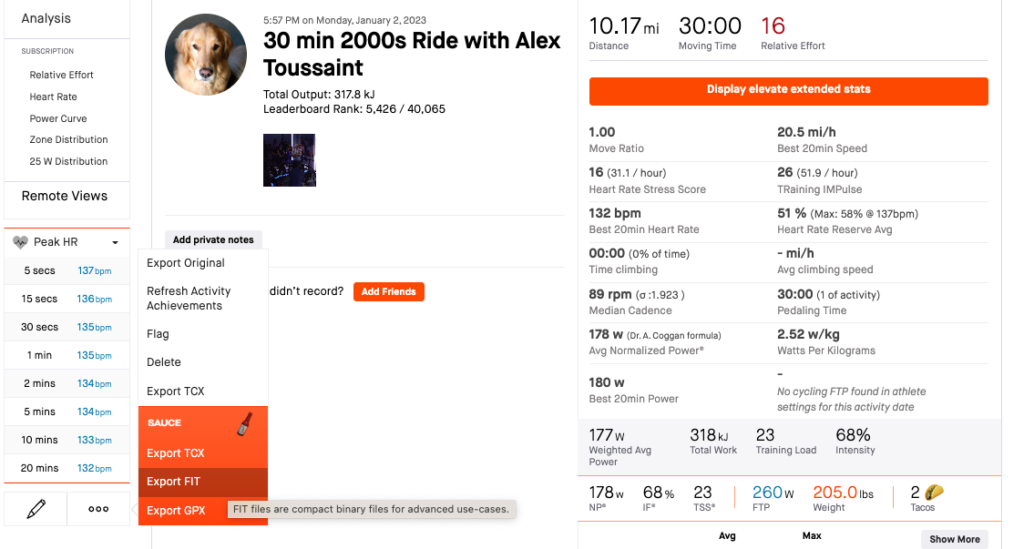After two moderate performances in Olympic Distance triathlons I finally decided to take the next one seriously. With 18 weeks to train, I hired a triathlon coach that is helping to set a proper training plan, and encourage some accountability so that training does not fall off after a few weeks of motivation.
My coach quickly got me setup with Training Peaks, which they use to layout the plan for the week and review what activities I have done. Since I intended to do 90% of my bike training on a Peloton, this meant I had to find a way to sync Peloton data to training peaks! Below I share the things that I learned during setup and the first few weeks of training.
Can You Use Peloton To Train for a Triathlon?
At the end of the day a Peloton bike is still just a bike, and most riders want to know is it good for Triathlon training. The simple answer is, yes a Peloton can easily be used as the primary training tool for a triathlon whether that is a Sprint, Olympic, or Ironman distance race.
To do so there are a few nuances that are worth keeping in mind. We’ve broken them down into four major areas to consider. For this purpose we are looking at doing structured training rides on a Peloton. If you are looking to just get fit enough to complete a triathlon, simply find one of the pre-planned training programs or simply jump into a class 2-3 times a week and you will be fine.

This summary is not just guess work though. Personally I have trained for 3 Olympic distance triathlons almost entirely on a Peloton. A typical training week includes 3 bike workouts, plus other days running and in the pool. There is nothing special about the Olympic distance though.
Longer races, like Ironman and half-Ironman 70.3, can also be trained for on a trainer bike and Peloton is no different. More to the point, it is often easier to train longer on an indoor trainer, as it eliminates the weather and safety issues of riding outdoors.
Peloton Class Setup Vs. Planned Training Rides
The hardest issue to overcome with Peloton vs. doing a training plan will be matching up classes to what the planned workout of a training plan. While it is possible to get a summary of the classes by digging, often the intervals of a class, even things like endurance power zone rides or HIIT rides, will not match that of a plan. Depending on how critical each workout your coach made up is, this can be hard to overcome.
There are two main ways to address this. The first and best way to do structured triathlon training with Peloton is to use the ‘Just Ride’ feature. We prefer on rest or open days the second option here as the music from classes beats that of ‘Just Ride’. But for a planned ride the just ride is the perfect way to record power. Both options will still capture the heart rate data and power data (watts and zones) that is needed by Training Peaks and coaches to analyze.

The other option is to simply mirror what the training plan calls for with a best attempt. Above is the Training Peaks view of a “Just Ride” 2x 15min intervals. By writing down the training plan on a piece of paper, then hopping on the bike for a planned time it was easy to just hold each zone. Using an accessory timer like an interval app on the phone can serve the same function as a notepad.
Harder is to find out how to match intervals, but again if the goal of the training plan is just to get intervals of high heart rate, pretty much any HIIT or Power Zone class will provide that same physical effects.
Power Readings
Many triathlon training plans, and cycling plans in general, call for controlling power output or heart rate zones. Similar to any power meter, the data from a Peloton bike is only as good as the calibration of the power meter on it. No two bikes are alike, and riding even on one Peloton vs. another will result in differences in overall readings.
That said, for the most part an individual bike is likely to be consistent over time. It’s entirely possible to control zones on a single bike from ride to ride. Just remember that if you want to translate that output to a different setup (say your main bike you plan to ride in the race) that you should have bike specific power zones. The best way to do this is to preform FTP tests on each bike and see how they compare, then adjust zones accordingly.
Wind Resistance & Aero Positioning
A trainer bike or Peloton which is placed indoors is always going to differ from riding in real outdoor conditions. Not only that the fit of a Peloton is often very different in geometry from that of a triathlon or time trial bike. This can be overcome with a bike fitting specific to the Peloton, but still wind resistance is a thing. To counter balance this you can either choose to add on things like Aerobars to the Peloton, or ensure that you spend some time on the real bike workout on holding a good position over time.
Bike Handling
The advantage of an indoor training bike like a Peloton is that it removes so many distractions and considerations and lets you focus on riding. However, climbing aggressively on a mounted stationary bike is different than doing so on a real bike.
Again ensuring time on a real bike is a good way to counter balance this, even if 90% of the training comes from a Peloton you still need to log some miles on bike you plan to ride on race day. As the old adage goes, nothing new on race day!
Sharing and Uploading Peloton to Training Peaks
For most training plans the key is to be able to monitor heart rate zones as well as power output. If you use a heart rate monitor with Peloton (either the included one, or like me the Apple Watch paired version) than all of the data is available, but there are two major issues. The first issue is figuring out how to actually get the data from a Peloton ride uploaded to Training Peaks.
There is no native way to sync a Peloton account to Training Peaks, so this process is manual. It is possible to write some simple scripts to do the work, but since the integration did used to be supported and the whole setup has the potential to change, doing things manually is the only way.
To sync Peloton rides to training peaks here is the recommended setup, which allows you to sync a single ride in under 20 seconds:
- A Peloton Bike & Heart Rate Monitor
- A Strava Account (using Desktop, not the app), synced to your Peloton account
- The Sauce plug-in for Strava
- Training Peaks Web Dashboard
Peloton does not easily export the ride data, so you need a Strava account in order to create and access a FIT file type. Sauce makes doing so easy since it puts it right in the web user interface. With this setup syncing a ride by creating and uploading a FIT file can be done easily. The steps to take to sync Peloton training rides to Training Peaks:
- Sync your Peloton and Strava accounts for auto uploads
- Navigate to the Strava after your ride. Find the three dots on the left side bar, expand it and click “Export FIT”
- Navigate to Training Peaks Web Calendar View. Drag and drop the exported file.
